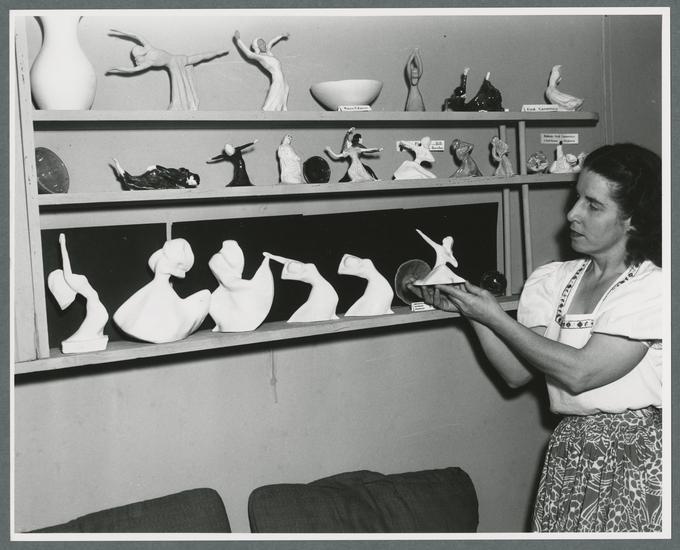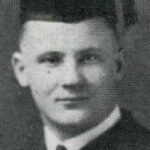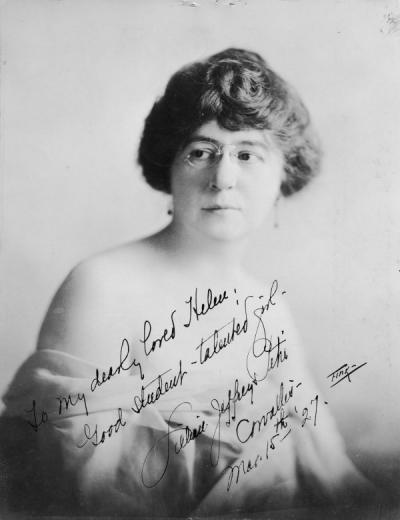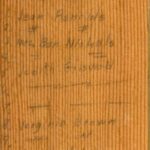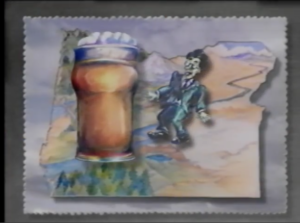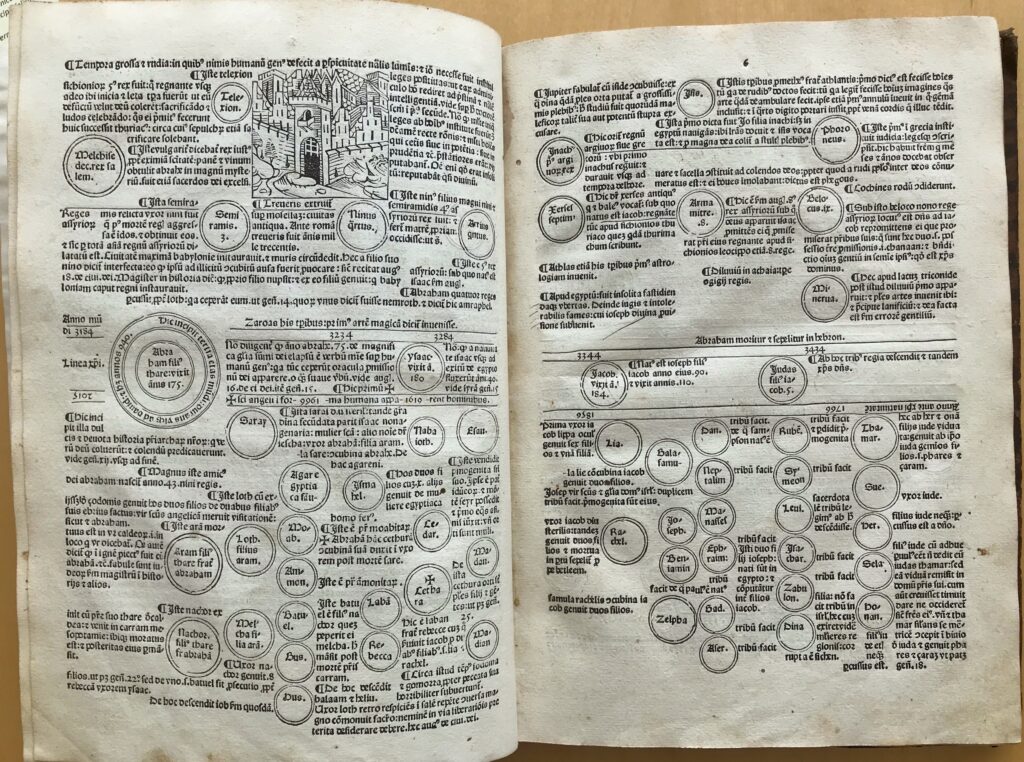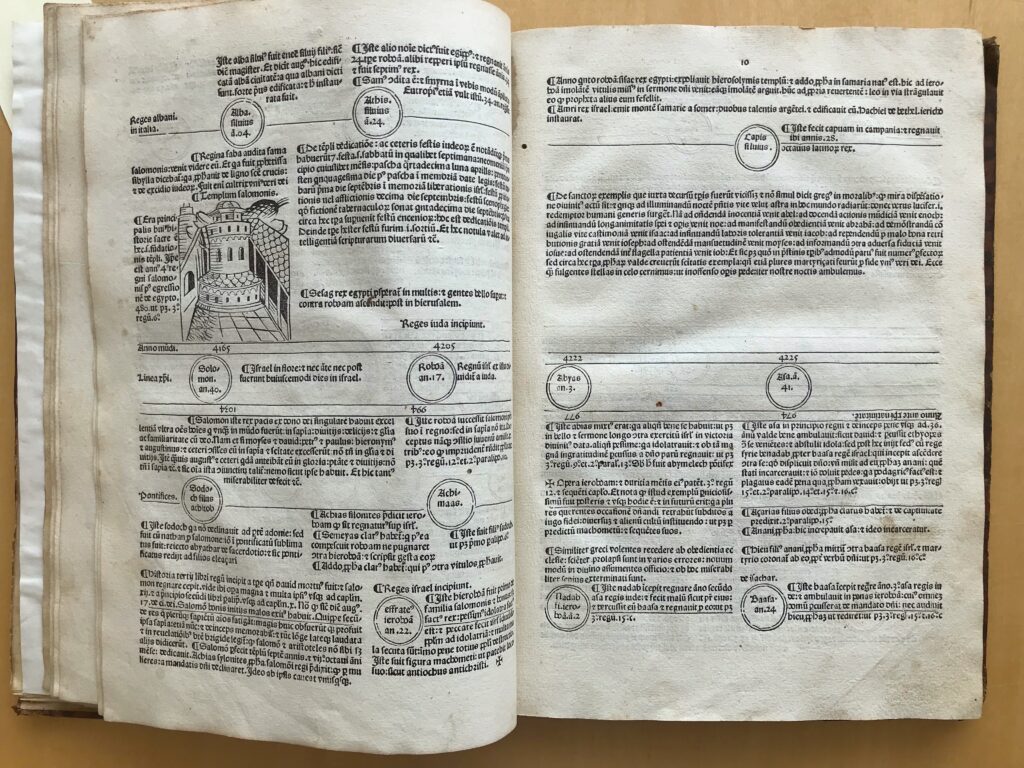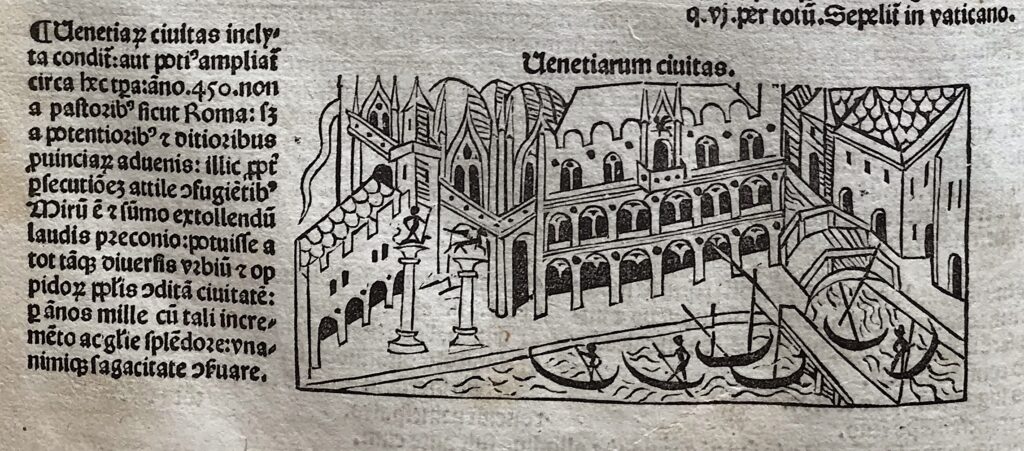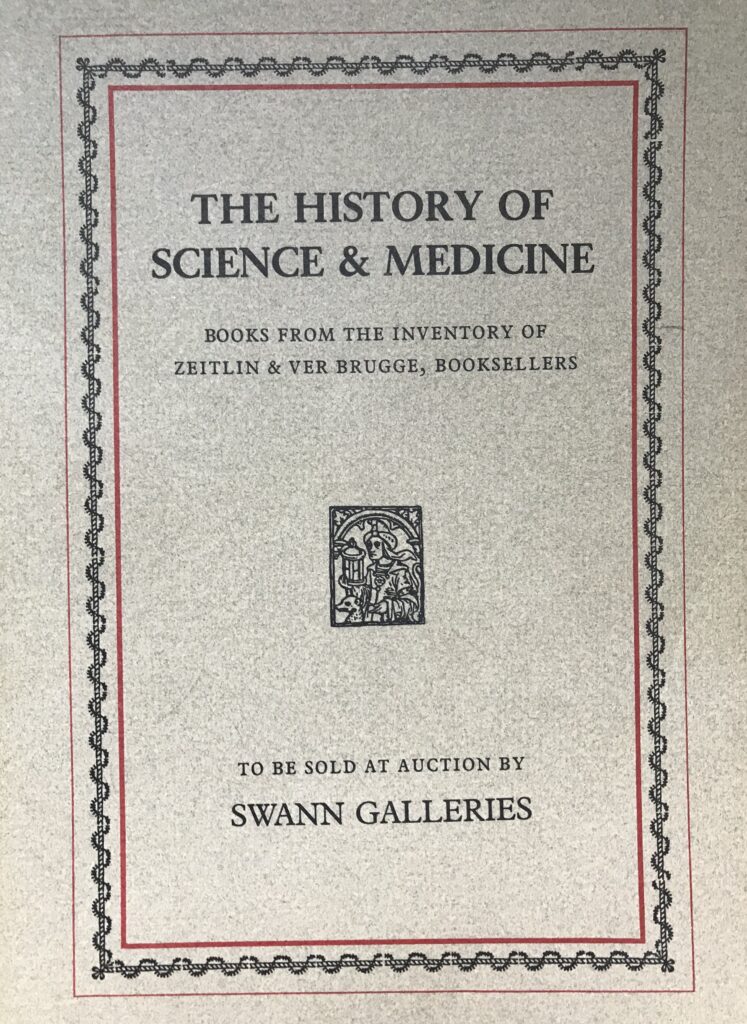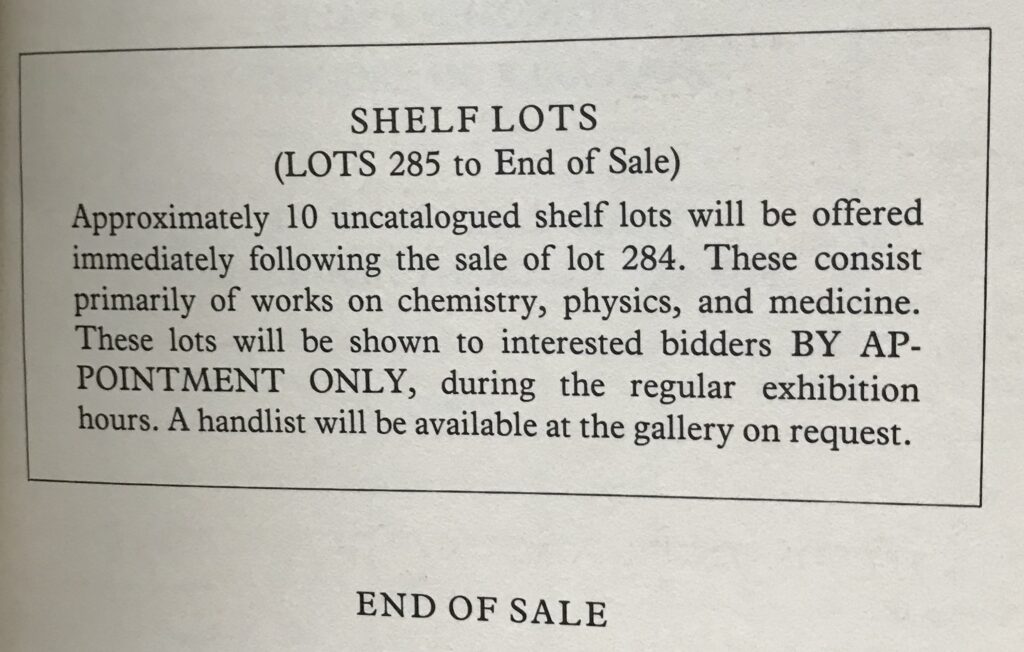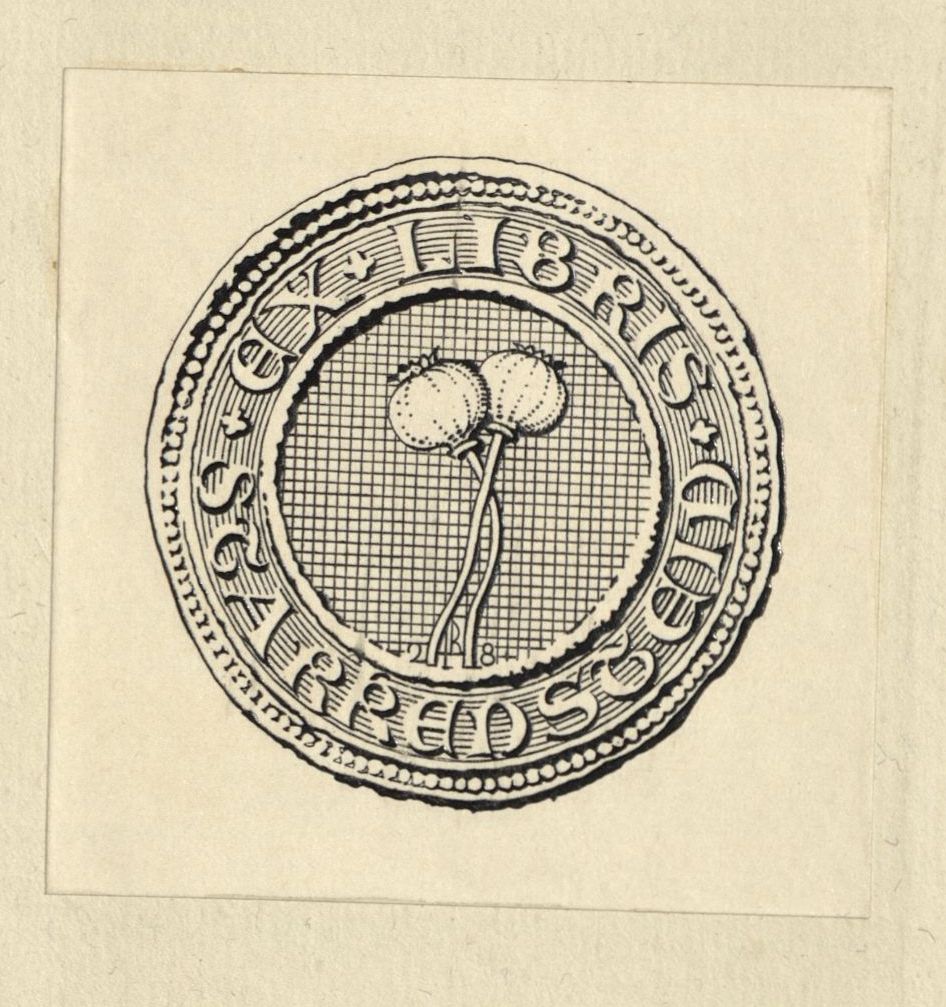
On a crisp autumn morning on November 3, 1894, the Oregon Agricultural College (OAC) Coyotes hosted the University of Oregon Lemon-Yellows for the inaugural football game between the two schools. The game was played on a field east of Community Hall (formerly the Administration Building), just north of present-day Callahan Hall. The game wasn’t much more than a scrimmage, and it didn’t draw any spectators. OAC had the edge, having established their football program the season prior, and they won the game handily, 16-0. For the next few years, the schools met in similarly low-stakes contests with little fanfare, or fans. There weren’t many in the Pacific Northwest who knew much about this new sport, often called gridiron football due to the field’s resemblance to a gridiron. Subsequently, coaches often moonlighted as officials, teams played with fewer players, and the general sentiment in Oregon was that it was a long, boring, and clumsy game. From the very beginning, the Coyotes and the Lemon-Yellows took turns hosting the game in either Eugene or Corvallis, sometimes playing twice in one year, once in each town.
What set the stage for the first game in what would become a nearly 100-year long tradition, came eighteen years prior, in 1873. The Massasoit Conventions – meetings of student leaders from Yale, Harvard, Princeton, and Columbia – standardized the rules of American Football. These four schools were early pioneers of the sport and, along with Rutgers and Tufts, adapted American Football from British sports like rugby and soccer. Though the way the sport was played would see many changes in the years following the Conventions, these meetings marked the beginning of the expansion of organized college football. News of the meetings, and the finalized set of rules, was picked up by newspapers and publications across the nation, and the game’s popularity boomed. As more schools established their own programs, the rules were further refined. With its roots as a “mob game,” where the goal was simply to get the ball across the goal line by any means possible, in the early days of football a game could see as many as 25 players on the field for one team. By the time the Coyotes and the Lemon-Yellows first faced off in 1894, the number of players had been whittled down to the modern-day limit of 11 per team. In fact, by 1912, the game looked remarkably like it does today. The field had been scaled to its present-day dimensions: 120 yards by 53 1/3 yards. The most noteworthy differences between football of the 1900s and today are the scoring conventions. Unlike today, where the main scoring mechanism is a six-point touchdown, at the turn of the 20th century it was a five-point field goal. In 1894, touchdowns were worth four points, and conversions – a successful kick between rugby uprights – were an additional two points. Just four years later, in 1898, the scoring system was further revised, with touchdowns worth five points, field goals worth four points, and conversions scaled back to a single point.
After the two teams had a few seasons under their belts, the contest between OAC and the University of Oregon began to amass a dedicated, and sometimes rowdy, following. In 1908, the Aggies and the Webfoots faced off for the very first time in Multnomah Stadium [now Providence Park] in Portland, drawing a sellout crowd of 15,000, and completely shattering their previous record of just under 3,500 spectators. Oregon won that game, 8-0, with two field goals. The rivalry had gained traction in the state, but with that traction came conflict. Fights often broke out on train platforms after games, and just two years after the sellout in Portland, some “rowdy hat-grabbing behavior” prompted the OAC student body to unanimously vote to sever ties with Oregon athletics. Two years later, in 1912, the schools negotiated a truce, and agreed to play on Hudson Field in Albany, neutral territory. They continued to play in Albany until 1914, returning to alternating fields between Corvallis and Eugene.

The rivalry continued to grow, both in popularity and in contention, between the two schools. Due to the increasing attention garnered by the rivalry, each team’s gridirons were upgraded in the late 1910s and early 1920s. In 1910, OAC constructed Bell Field, on the very same spot where present-day Dixon Recreation Center now stands. Oregon built Hayward Field in 1919; in 1967, with the construction of Autzen Stadium, Hayward became Oregon’s dedicated track and field stadium. Tensions surrounding the rivalry continued to run high, and often reached a boiling point; fights were not uncommon, as were kidnappings of mascots and homecoming courts. The conflict surrounding the contest prompted Oregon head coach John McEwan (1926-1929) to refer to it as “the great Civil War.” The nickname slowly caught on in subsequent years, and by the late 1930s the rivalry was exclusively referred to as the Civil War (the 1938 Beaver yearbook was the first OSU student publication to use the moniker). This carried over almost immediately to contests in other sports played by the two teams. Whether it be football, basketball, baseball, or any other sport, fans referred to any head-to-head match between the schools as the Civil War game of that particular sport.
The football Civil War game was frequently played at Portland’s Multnomah Stadium during the 1930s, with games alternating annually between Hayward Field, Bell Field, and Multnomah Stadium. In 1943 and 1944, no football season was played by either team, as they simply couldn’t field enough players due to World War II. Between 1952 and 1953, Oregon State College built Parker Stadium (renamed Reser in 1999), and the University of Oregon built Autzen Stadium. Having built new stadiums, and considering the age and general neglect of Multnomah Stadium, a more permanent location rotation was put into place for the Civil War, with the game alternating annually between Corvallis and Eugene.

The game continued to grow in popularity into the 1960s, with tens of thousands of spectators regularly in attendance. The rivalry remained as heated as ever, and though there may have fewer physical altercations, the contest itself resulted in some truly memorable, and historic, games. Who could forget the humiliatingly named Toilet Bowl of 1983, a game plagued by turnovers and missed field goals, one in which the Beavers and Ducks fought their way to a nothing-nothing tie (the last scoreless tie in college football history)? Or the 1998, double-overtime OSU victory, which Beaver fans celebrated by tearing up the artificial turf? Most recently, in the midst of a pandemic and in a stadium empty of fans, the Beavers squeaked out a three-point victory over the 15th ranked Ducks, the first time they’d beat a ranked opponent since 2014. As of 2020, the Civil War had been played 125 times, putting the rivalry in the top ten of the most-played college football series.
The history of the OSU-UO Civil War mirrors that of many other rivalries across the nation, in particular the other schools in the PAC-12 conference. All these schools have a similar rivalry, each with a name representative of their locale or history. The University of Washington plays Washington State University in the Apple Cup; Stanford University plays the University of California-Berkeley each year in the Big Game; the University of Southern California plays the University of California-Los Angeles in the Crosstown Cup; the University of Arizona plays Arizona State in the Territorial Cup; and the University of Colorado plays the University of Utah in their alliteratively-titled rivalry game, the Rumble in the Rockies. Each year, all these schools face off on the same weekend in November, fondly referred to as Rivalry Week.
In 2020, after over 100 years, the University of Oregon and Oregon State University jointly announced they would no longer refer to the annual rivalry game as the “Civil War.” Amid protests surrounding racial injustice, and the killings of George Floyd and Breonna Taylor, the two schools decided the name was insensitive, as it referenced “a war fought to perpetuate slavery.” In a statement on the decision to repeal the title, OSU President Ed Ray commented that “while not intended as reference to the actual Civil War, OSU sports competitions should not provide any misconstrued reference to this divisive episode in American history.” The announcement was met with mixed reactions, with many claiming the moniker “never made sense” in the first place, and others asserting the change was “needless virtue signaling.” A new name has yet to be announced.
Though the name will change, the rivalry and its physical expression will persist, as it has through six scoreless ties and two World Wars. The changing of the name moves OSU one tiny step closer to becoming a more welcoming and inclusive community, and comes with the opportunity to fashion a new name, one which will embody the true character of the rivalry and its schools. It could be called something elegant and historical, like the Oregon Classic. Perhaps it should hearken back to the little-known platypus trophy, given to the winner of the contest in the 1950s and 1960s – a trophy stolen so many times it was eventually locked in a closet at McArthur Court on the University of Oregon’s campus. Given the schools’ mascots, the Platypus Cup does seem entirely appropriate. Regardless of what it is called, there is no doubt, with its long and storied history, the Oregon-Oregon State rivalry will live on.
Works Consulted
- “1983 Oregon State vs. Oregon Football Game.” Wikipedia, 17 Jan. 2021. Wikipedia, https://en.wikipedia.org/w/index.php?title=1983_Oregon_State_vs._Oregon_football_game&oldid=1000872423.
- Adelson, Andrea. “Oregon, Oregon State Drop ‘Civil War’ Moniker.” ESPN.Com, 26 June 2020, https://www.espn.com/college-football/story/_/id/29370252/oregon-oregon-state-dropping-civil-war-name-rivalry-games.
- Canzano, John. “Canzano: 121 Things You Don’t Know about the Civil War Game.” Oregon Live, 22 Nov. 2017, https://www.oregonlive.com/sports/oregonian/john_canzano/2017/11/canzano_121_cool_things_you_do.html.
- Caputo, Paul. “Getting Our Webfeet in a Row: The Story Behind the Oregon Ducks.” SportsLogos.Net News, 27 Sept. 2014, https://news.sportslogos.net/2014/09/27/getting-our-webfeet-in-a-row-the-story-behind-the-oregon-ducks/college/.
- Carlson, Kip. Oregon State Football. Arcadia Publishing, 2006.
- “Chronological History of Oregon State University – 1950 to 1959.” OSU Libraries University Archives, 26 Sept. 2012, https://web.archive.org/web/20120926004224/http:/archives.library.oregonstate.edu/chronology/chron_1950.html.
- Edmunston, George. Up Close and Personal: Greatest Civil War Games. https://osughost.imodules.com/s/resources/templates/login/index.aspx?sid=359&gid=1&pgid=454. Accessed 21 July 2021.
- Etheridge, Steve. “The Original Rules of College Football.” ESPN.Com, 15 Aug. 2019, https://www.espn.com/college-football/story/_/id/27356104/the-original-rules-college-football.
- “Gameday Traditions.” Oregon State University Athletics, https://osubeavers.com/sports/2013/7/9/208626262.aspx. Accessed 21 July 2021.
- History of Football – Football History | Pro Football Hall of Fame Official Site. https://www.profootballhof.com/football-history/history-of-football/. Accessed 21 July 2021.
- Marwit, Dan. “Walter Camp: The Man Who Gave You Football.” The New York Public Library, February 3 20016, https://www.nypl.org/blog/2016/02/03/walter-camp-father-football.
- “Oregon–Oregon State Football Rivalry.” Wikipedia, 10 July 2021. Wikipedia, https://en.wikipedia.org/w/index.php?title=Oregon%E2%80%93Oregon_State_football_rivalry&oldid=1032987468.
- Oriad, Michael. “Gridiron Football | Definition, History, Leagues, Rules, & Facts.” Encyclopedia Britannica, https://www.britannica.com/sports/gridiron-football. Accessed 21 July 2021.
- Prince, Seth. “Civil War: The Complete Game-by-Game History.” Oregon Live, 23 Nov. 2008, https://www.oregonlive.com/behindbeaversbeat/2008/11/civil_war_the_complete_gamebyg.html.
- Rodman, Bob. “It’s Reser Stadium Now, OSU Fans.” Eugene Register-Guard, 15 June 1999, https://news.google.com/newspapers?id=-1ZWAAAAIBAJ&sjid=o-sDAAAAIBAJ&pg=6205%2C3959757.
- The Beaver 1938 | Oregon State University Yearbooks | Oregon Digital. https://oregondigital.org/sets/osu-yearbooks/oregondigital:3t945r17t#page/1/mode/1up. Accessed 21 July 2021.
- University of Oregon. “Hayward Field.” University of Oregon Athletics, 5 Aug. 2003,https://goducks.com/news/2003/8/5/22187.aspx.
- Where’s Waldo? Exploring Waldo Hall History – Special Collections & Archives Research Center. http://scarc.library.oregonstate.edu/omeka/exhibits/show/waldo/wartime/wwii. Accessed 21 July 2021.
- Ylen, Mark. “A Civil War History Lesson.” Albany Democrat Herald, 17 Nov. 2012, https://democratherald.com/news/local/a-civil-war-history-lesson/article_ddf67730-3088-11e2-aa43-0019bb2963f4.html.
Sydney Klupar graduated from Oregon State University with an Honors Bachelor of Science in environmental economics and policy in June 2021. She has worked at SCARC since September 2018, helping with a myriad of projects including transcription, processing, and description of archival collections. During her time at OSU, Klupar participated in many clubs, including the Spirit and Sound of OSU, the Oregon State University Marching Band. She is moving on to Lewis and Clark Law School and will graduate with a J.D. and L.L.M. in environmental, natural resource, and energy law in 2024.








